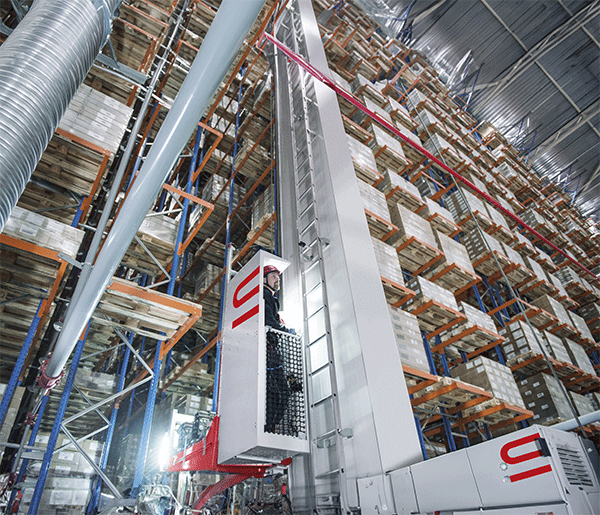Key warehouse automation trends for 2024
The core issues facing supply chains in 2023 – labour availability, capacity, space availability and resiliency, says Swisslog’s Sean Ledbury – aren’t going away in 2024. But how supply chain leaders address these challenges continues to evolve.
“Moving into the new year, we are seeing organisations finding new ways around barriers to automation, increasing their investments in established technologies, and seeking new levels of efficiency and productivity through orchestration and artificial intelligence. Here’s a more detailed look at some of the trends we expect to see this year,” says Ledbury. Here he takes a looks at warehouse automation trends for 2024.
Smaller and emerging organisations face the same labour, efficiency, and speed challenges as their larger competitors. Yet, they often lack the resources to address these challenges through capital-intensive automation projects, putting them at a competitive disadvantage.
In 2024, flexible infrastructure technologies such as mobile robotics and AGVs (automatic guided vehicles) will play a larger role in leveling the playing field. Swisslog’s CarryPick system, for example, is ideal for small-to-medium enterprises (SMEs) because it is fast and cost-effective to implement, delivering significant labour savings, and making easy to scale. For larger companies requiring higher throughputs, Swisslog’s shuttle and grid-based goods-to-person systems come with a potentially larger investment, but can deliver greater returns on a greater scale.
For these organisations that are seeking higher throughputs, standardised configurations of the popular AutoStore system – for which Swisslog is the number one global integrator – will reduce engineering and software customisation costs while delivering the robust functionality that meets the requirements of most applications.
Re-shoring refocuses supply chains on pallet handling
After years of industry focus on automating each picking to support growing e-commerce and omni-channel distribution, pallet handling systems will recapture their share of the spotlight in 2024.
That’s partly due to the continued momentum around re-shoring, in which Australian and New Zealand based businesses are re-centring their supply chains to improve resiliency. This is driving development of high-bay warehouses that support distribution of palletised products and that will result in increased investment in pallet handling technologies, particularly crane-based and shuttle-based ASRS (Automated Storage and Retrieval Systems).
Solutions based on technologies like the Swisslog Vectura crane and PowerStore maximise space utilisation in high-bay warehouses and deliver proven reliability over decades of service. Supply chains already dependent on pallet ASRS will extend the value of these solutions by investing in lifecycle services that ensure reliability and enable adaptability allowing companies to get more out of what they already have.
AI expands beyond machines
Machine learning, a form of AI, has been instrumental over the past several years in enabling technologies such as robotic item picking to advance to their current state. Now the incredible advances in generative AI that occurred in 2023 are creating new opportunities for AI in the supply chain.
Initially, we’re likely to see automation vendors apply generative AI to their training libraries to streamline the development of custom training for their customers. Even higher value will be realised as AI works with warehouse software systems to derive insights from the data-rich warehouse environment. Forecasting, slotting, and sequencing processes all stand to benefit.
Software takes centre stage
As operators increasingly seek to orchestrate people, processes, and technology within the warehouse, they’ll find their ability to execute on this strategy dependent on the software that controls their automation systems.
WMS platforms simply aren’t well positioned to address orchestration challenges as they lack the machine-level view of operations required. That puts the onus on automation integrators to deliver software solutions capable of capturing data at the machine level while providing a holistic view of warehouse operations. Software platforms that provide real-time visibility into the logical and operational level will become even more valuable as AI enables more accurate forecasts and resources can be aligned to execute on those forecasts with the highest efficiency.
Swisslog’s SynQ software, which stands for synchronised intelligence, synchronises people, process, and machines for efficient operations. In addition to being a WMS, it can perform the task of a WCS (warehouse control system), or MFS (material flow system), and can seamlessly interact with ERP (enterprise resource planning) and e-shop systems.
SynQ optimises the storage of goods, placing fast moving goods near the point of dispatch, and slower moving goods towards the back of the storage. What further sets SynQ apart from other software is its ability to ‘click and solve’ directly from the 3D visualisation.
Software like SynQ, more than hardware, then becomes the key enabler of successful automation and operators will increasingly seek out solutions with WCS, WMS and MFS functionality integrated in a common modular platform with a common toolset.

